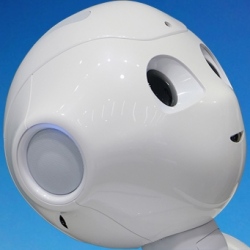
By now, everyone and their grandparents are talking about machine learning and AI. Unfortunately, many people have been questioning whether all this effort is worth it, and some are worried about future job losses. If you cut through the hype and use a strategic goal, machine learning can offer real-world value.
The increased ease, speed, and functionality it offers create avenues for use cases across the spectrum of industries that rely heavily on data.
For retail businesses, it provides an opportunity to improve and customize the customer experience. Let’s take a look at five examples that are worth noting. Given that one of the world’s most prolific scientific minds on AI just resigned from Baidu to focus on his next project that will “benefit the greater good,” I felt this was timely.
1. Machine learning helping the disabled
Much like the closed captioning we’ve seen on TV, machine learning now makes it possible to identify specific elements from YouTube videos. New algorithms can visualize sound effects like applause, laughter, and music. This is a huge development for the versatility of the platform, as it looks to become more accessible. Google’s new video intelligence API made big news recently at Google Cloud Next, and it uses extremely high-tech models to identify specific elements in video. This can include things as descriptive as a smile, water, a species of animal. Machine learning makes both of these possible and opens the door for many new possibilities for making online content easier to access for the disabled.
Student and startup employee Austin Lebetkin lives with autism spectrum disorder. He thinks that machine learning can open the door for the disabled to use and interact with digital content in many of the same ways that others do. Considering the amount of new content being developed that emphasizes audio-visual interactivity, this is a huge breakthrough for the disabled.
2. Suicide prevention
After some horrific events involving the livestreaming of suicides, Facebook garnered a considerable amount of negative feedback. To combat this, the company decided to implement machine learning capabilities. Machine learning will now “build predictive models to tailor interventions earlier.” It’s coming at the right time, considering there’s been an increase in suicide rates over the past couple of years. With appropriate data mining, Facebook and others will be able to identify suicidal tendencies earlier and be quicker to intervene.
3. Wearable medical devices
A company called Geneia is using machine learning to increase data efficiency and improve insights. By better utilizing data, Geneia is able to improve medical status predictions at a much quicker rate. This means responses arrive earlier and offer a higher quality of care. Clinical assessments and lab values used in the past are much less speedy and efficient. As a result, there’s a very real possibility that the sick or elderly can live more comfortably at home while avoiding the risk involved in being away from medical facilities.
4. Student growth measures for success
Anyone who’s studied in a public classroom knows that there are a number of different learning styles. Not everyone’s brain functions the same, and everyone has different needs. Thanks to machine learning, meeting those needs is becoming much easier. Use of student-level projections allows for a standardized measure of success so that each student can learn and progress according to their own characteristics. This creates a much higher chance for a student to respond positively, and ultimately gives that student a better chance of success.
5. Machine learning identifying skin cancer
Stanford researchers have been working very hard on this one. They’ve created a machine learning algorithm that uses a massive image database to make skin cancer diagnoses. Using the more recent developments combining deep learning with visual identification, the algorithm is aimed at replacing the initial observation step of skin cancer diagnosis. This will make the process easier and more efficient for both the patient and the doctor. Though the algorithm currently exists on a computer, there’s a plan in place to expand to mobile very soon.
When you look at some of these cases, it’s clear that there’s a lot more at stake when we talk about the value of machine learning. Most of the buzzworthy tech news falls short of providing a sense of the huge possibilities at stake. Though current uses may seem simplistic, they are simply building blocks to begin using it in much more widespread, impactful ways. The companies mentioned here are finding new and creative ways to use machine learning, and it’s these stories that deserve a much bigger place in the conversation surrounding AI.
